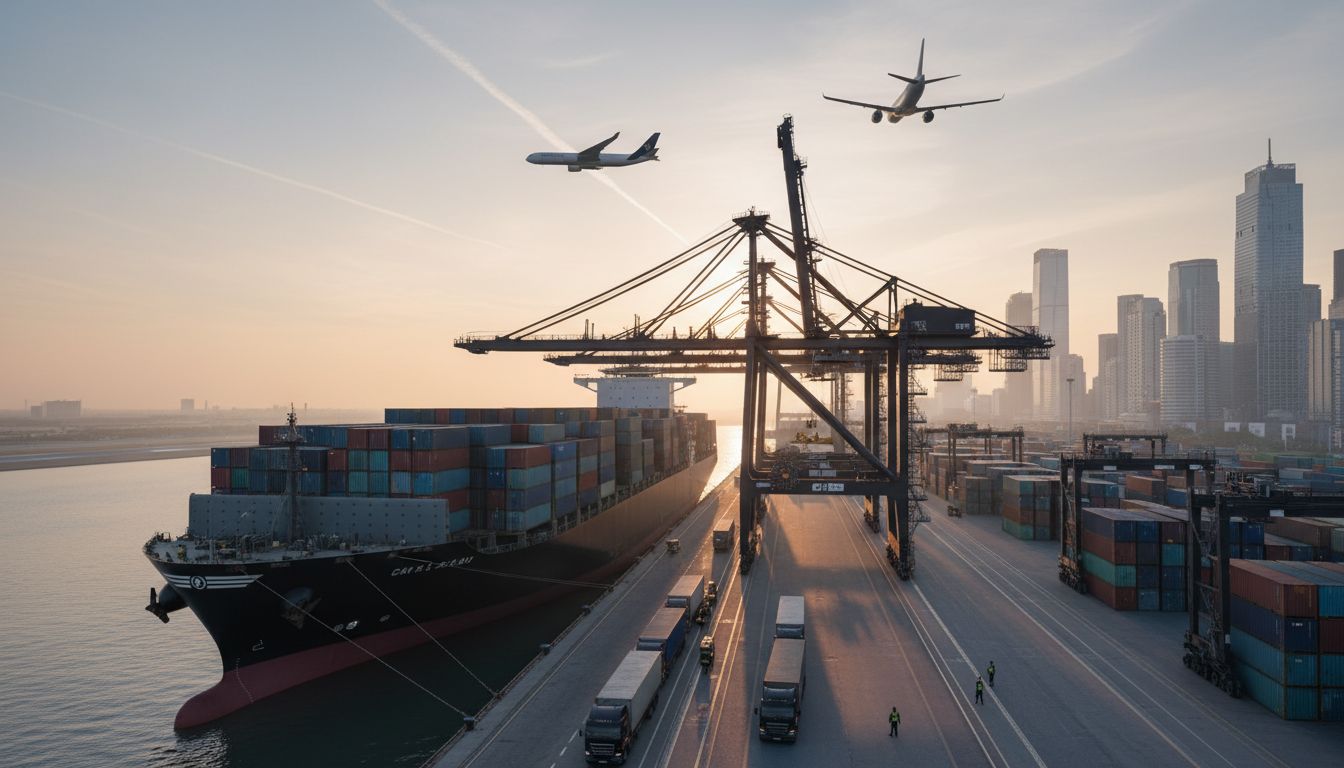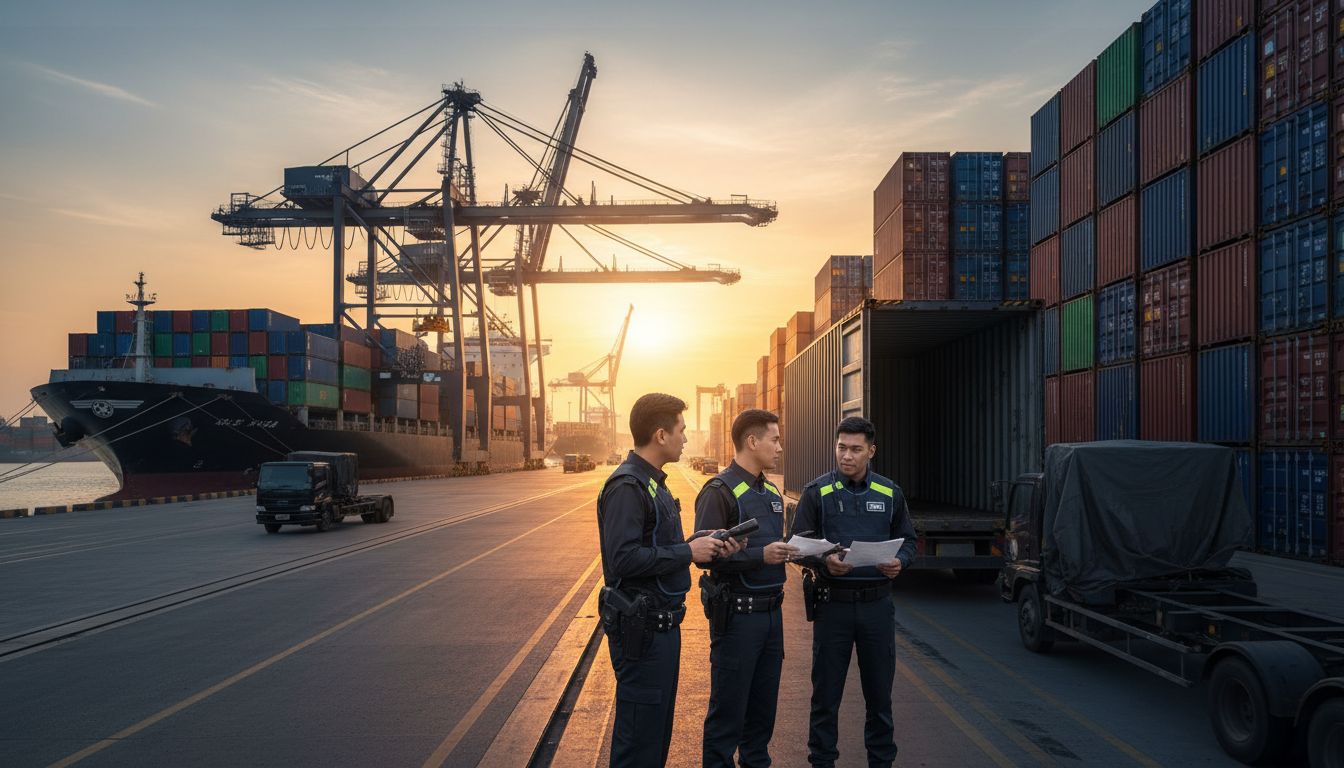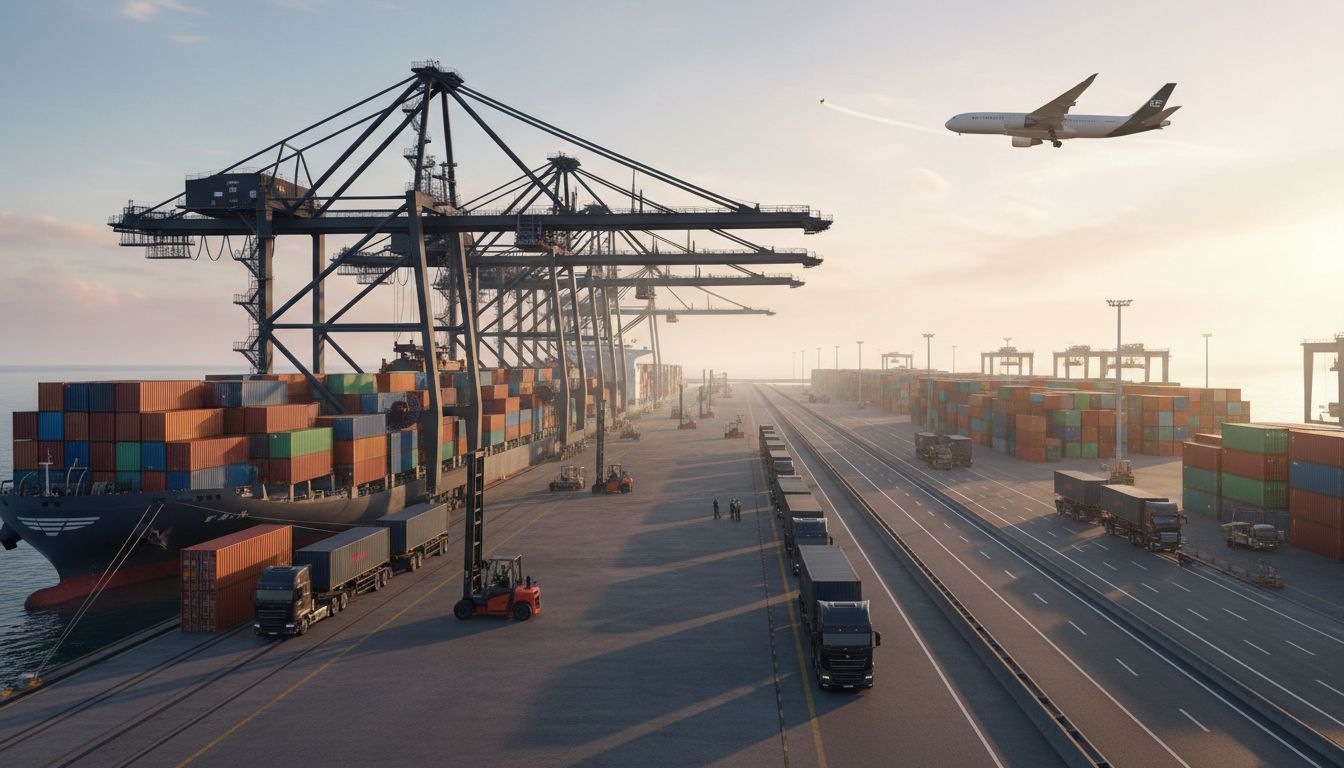Shipping goods across continents sounds complex and full of paperwork. Yet only one document, the through bill of lading, can handle the entire journey from factory floor to foreign warehouse. Here is what might surprise you. A through bill of lading is legally recognized as a contract, official receipt, and even a document that can transfer ownership of goods—all at once. Most people think moving cargo worldwide means mountains of forms and endless risks, but this one document cuts straight through the clutter and makes global shipping far more efficient than you might think.
Table of Contents
- Defining Through Bill Of Lading And Its Purpose
- Importance Of Through Bill Of Lading In Global Trade
- Key Components Of A Through Bill Of Lading
- How Through Bill Of Lading Facilitates Shipping Processes
- Real World Applications Of Through Bill Of Lading
Quick Summary
| Takeaway | Explanation |
|---|---|
| Through bill of lading simplifies logistics | This document consolidates multiple transport segments into one, streamlining the shipping process significantly. |
| Key legal protections are provided | A through bill of lading defines carrier liability and outlines responsibilities, minimizing risks for shippers and carriers. |
| Enhances tracking and accountability | Offers clear visibility into the supply chain, improving operational efficiency and communication among all parties involved. |
| Facilitates international trade compliance | Ensures adherence to regulations while easing customs clearance through comprehensive documentation. |
| Supports advanced digital integration | Modern applications include real-time tracking and automated processes, linking traditional shipping with emerging technologies. |
Defining Through Bill of Lading and Its Purpose
A through bill of lading represents a sophisticated shipping document that enables seamless cargo transportation across multiple carriers and transportation modes. Understanding bill of lading types becomes crucial for businesses engaged in complex international trade logistics.
What Exactly is a Through Bill of Lading?
A through bill of lading is a comprehensive shipping document that covers the entire transportation journey of goods from their origin point to the final destination, regardless of the number of carriers or transportation modes involved. According to Cornell Law School’s Legal Information Institute, this document serves multiple critical functions:
- Legal evidence of the transportation contract
- Official receipt confirming goods received by carriers
- Potential document of title transferring ownership of goods
Key Characteristics and Importance
Unlike traditional bills of lading that might cover only a single transportation segment, a through bill of lading provides end-to-end transportation coverage.
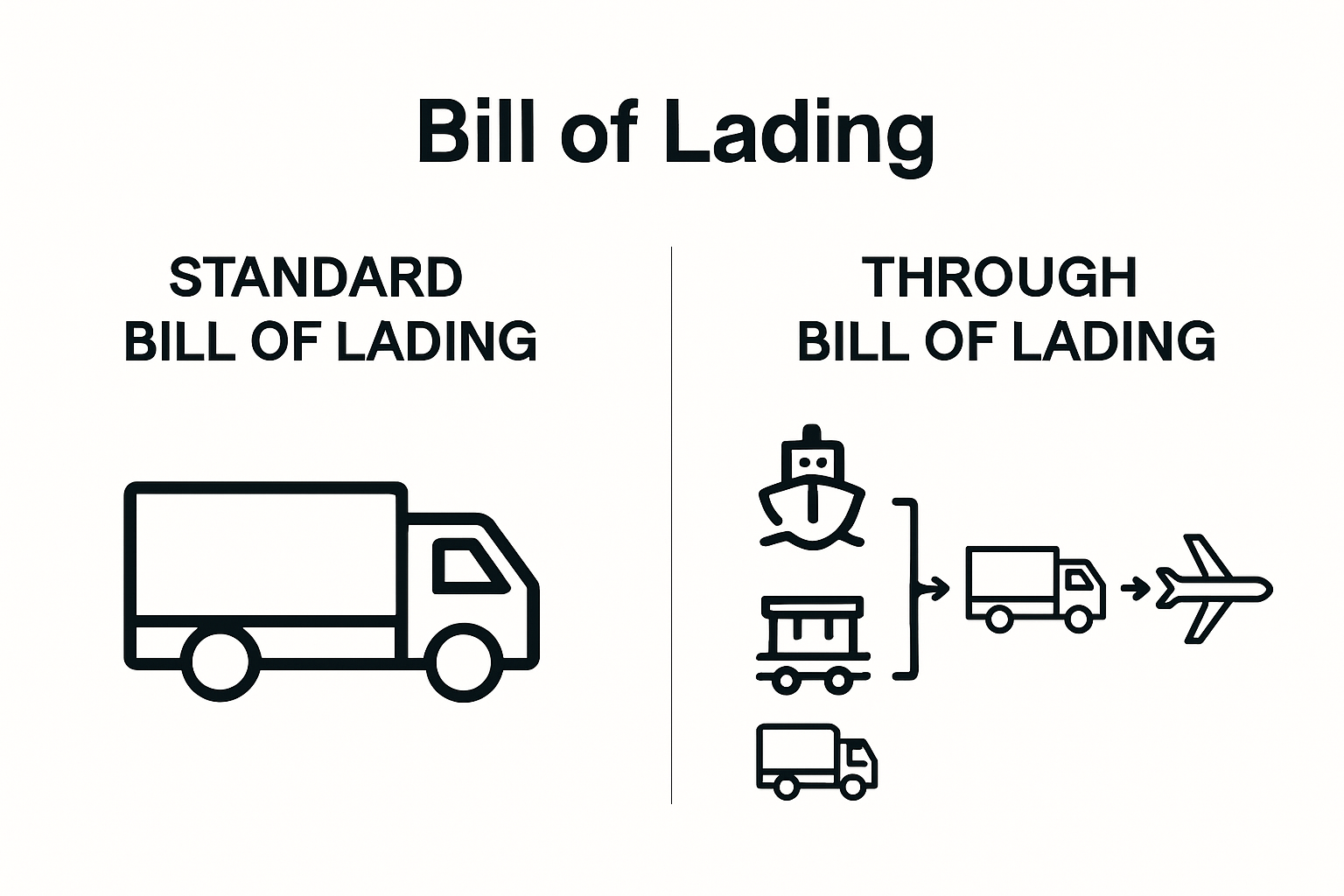 This means a single document can track goods transported via ship, truck, rail, or air, creating a streamlined process for international shipping.
This means a single document can track goods transported via ship, truck, rail, or air, creating a streamlined process for international shipping.
The primary advantages include simplified documentation, reduced administrative complexity, and clear accountability across different transportation stages.
Shippers can rely on one comprehensive document that outlines the entire transportation route, carrier responsibilities, and cargo details.
Legal and Logistical Significance
From a legal perspective, a through bill of lading establishes clear terms of carriage, liability boundaries, and transfer of cargo responsibility between multiple carriers. It protects both shippers and carriers by providing a transparent, standardized record of the goods’ transportation journey.
Businesses engaged in international trade benefit significantly from this document, as it reduces potential disputes, simplifies customs clearance, and provides a clear paper trail for complex multi modal shipments.
Importance of Through Bill of Lading in Global Trade
In the complex world of international commerce, a through bill of lading plays a pivotal role in facilitating smooth and efficient global trade operations. 8 Key Freight Terms Definitions provides additional context for understanding shipping documentation.
Facilitating Multimodal Transportation
A through bill of lading becomes critical when goods must traverse multiple transportation modes and jurisdictions. By providing a single, comprehensive document that covers the entire shipping journey, businesses can significantly reduce administrative complexities and potential logistical challenges.
The document enables seamless transitions between different carriers, whether goods are transported by:
- Maritime shipping
- Air freight
- Rail transportation
- Trucking services
Legal and Financial Risk Mitigation
According to U.S. Code Title 46, through bills of lading represent crucial legal instruments that establish clear carrier responsibilities and rights. They provide critical protections for both shippers and transportation providers by:
- Defining precise liability boundaries
- Establishing clear terms of carriage
- Creating a standardized record of cargo transfer
Economic Efficiency and Global Trade Optimization
Beyond legal documentation, through bills of lading contribute significantly to global trade efficiency. They streamline shipping processes by reducing paperwork, minimizing potential disputes, and creating transparent accountability across international transportation networks.
Businesses utilizing through bills of lading can experience substantial operational benefits, including faster customs clearance, reduced administrative costs, and improved tracking of international shipments. This documentation serves as a powerful tool for companies seeking to optimize their global supply chain management and reduce potential financial risks associated with complex international transportation.
Key Components of a Through Bill of Lading
Understanding the critical elements of a through bill of lading is essential for businesses engaged in international trade. What is the Bill of Entry? provides complementary insights into shipping documentation.
Essential Identifying Information
A comprehensive through bill of lading contains crucial details that ensure smooth transportation and legal compliance. According to Cornell Law School’s Legal Information Institute, the document must include specific identifying information such as:
- Names and addresses of shipper (consignor) and receiver (consignee)
- Complete origin and destination points
- Detailed description of goods being transported
- Quantity, weight, and volume of cargo
- Unique shipment or tracking reference numbers
Carrier and Transportation Details
The through bill of lading provides comprehensive information about the transportation process, including:
- Names of all carriers involved in the shipment
- Specific transportation modes (maritime, air, rail, truck)
- Estimated transit times and routes
- Freight charges and payment terms
- Special handling instructions for specific cargo types
Legal and Contractual Provisions
Beyond logistical information, a through bill of lading serves as a legally binding contract that outlines critical terms and conditions. This document establishes clear responsibilities and liability boundaries for all parties involved in the shipping process.
Key legal components typically include clauses addressing:
- Carrier liability limits
- Cargo insurance requirements
- Conditions for cargo damage or loss
- Dispute resolution mechanisms
- Compliance with international shipping regulations
By meticulously documenting these components, a through bill of lading provides a comprehensive and legally robust framework for international cargo transportation, protecting the interests of shippers, carriers, and recipients alike.
The following table breaks down the essential components of a through bill of lading, summarizing the key types of information required for effective and compliant international shipping.
| Component Category | Key Details Included |
|---|---|
| Identifying Information | Shipper and receiver names/addresses, origin and destination points, description and quantity of goods |
| Carrier Details | Names of all carriers, transportation modes (ship, rail, air, truck), transit times and routes |
| Reference Information | Unique shipment or tracking numbers |
| Payment & Charges | Freight charges, payment terms |
| Special Instructions | Special handling requirements, cargo-specific notes |
| Legal and Contractual Terms | Carrier liability limits, insurance requirements, dispute resolution, compliance with international regulations |

How Through Bill of Lading Facilitates Shipping Processes
In the intricate landscape of international shipping, a through bill of lading serves as a critical tool for streamlining complex transportation workflows. Freight Terms Definitions offers additional context for understanding shipping documentation nuances.
Simplifying Multi Carrier Logistics
A through bill of lading dramatically simplifies the coordination between multiple transportation carriers by providing a single comprehensive document that tracks goods across different modes and jurisdictions. According to 49 CFR 373.201, this documentation ensures seamless interstate transportation arrangements.
The document enables efficient logistics by:
- Reducing administrative overhead
- Eliminating redundant paperwork
- Creating transparent accountability across transportation networks
- Standardizing communication between carriers
Enhancing Operational Efficiency
By consolidating shipping information into one document, through bills of lading significantly reduce potential communication gaps and operational friction. Businesses can track their shipments more effectively, with clear visibility into:
- Complete transportation routes
- Estimated transit times
- Carrier responsibilities
- Potential transfer points
- Comprehensive shipping costs
Legal and Financial Risk Management
Beyond logistical coordination, through bills of lading play a crucial role in managing legal and financial risks associated with international shipping. The document establishes clear liability boundaries and provides a standardized mechanism for resolving potential disputes.
Key risk management benefits include:
- Definitive proof of shipment conditions
- Clear allocation of carrier responsibilities
- Comprehensive documentation for insurance claims
- Transparent record of cargo transfer between carriers
By providing a holistic approach to shipping documentation, through bills of lading transform complex international transportation into a more predictable, manageable process for businesses worldwide.
This table compares the advantages a through bill of lading provides at each core stage of the international shipping and logistics process, illustrating how it supports efficient and secure cargo movement.
| Shipping Stage | How Through Bill of Lading Helps |
|---|---|
| Multimodal Transportation | Consolidates paperwork and enables shipment tracking across carriers |
| Customs Clearance | Streamlines documentation, speeds up regulatory checks |
| Risk Management | Defines carrier liability, supports claims for loss or damage |
| Supply Chain Visibility | Enhances tracking and communication among all parties |
| Trade Financing | Serves as proof of ownership and contract for payment processing |
| Digital Integration | Supports real-time tracking and automated logistical processes |
Real-World Applications of Through Bill of Lading
International trade relies on precise documentation to ensure smooth cargo movement across complex global supply chains. What is the Bill of Entry? provides additional context for understanding shipping documentation.
Manufacturing and Supply Chain Logistics
Manufacturers and global supply chain managers extensively utilize through bills of lading to coordinate intricate transportation requirements. According to 49 CFR 373.201, these documents are critical for tracking interstate and international shipments.
Typical applications include:
- Tracking automotive parts across multiple international manufacturing facilities
- Coordinating electronics component shipments between global suppliers
- Managing raw material transportation for large-scale industrial production
- Facilitating complex multi stage manufacturing processes
International Trade and Commerce
Businesses engaged in global commerce rely on through bills of lading to navigate the complexities of international shipping regulations and logistics. The document serves as a comprehensive transportation contract that enables:
- Seamless cargo movement between different countries
- Compliance with international trade regulations
- Accurate customs declaration and clearance
- Risk management for high value or sensitive cargo shipments
- Financial documentation for trade financing
Technology and Emerging Logistics Innovations
Modern through bills of lading are increasingly integrated with digital tracking technologies, transforming traditional shipping documentation. Advanced applications now include:
- Real time GPS tracking of cargo movements
- Digital authentication and blockchain verification
- Automated customs clearance processes
- Integrated supply chain management systems
- Predictive analytics for shipping route optimization
By providing a flexible and comprehensive documentation framework, through bills of lading continue to evolve as a critical tool in modern global logistics, bridging technological innovation with traditional shipping practices.
Ready to Simplify Your Shipping with Expert Through Bill of Lading Support?
Managing global trade involves a maze of paperwork, legal requirements, and coordination between multiple carriers. The article above explores how a through bill of lading provides clarity and efficiency for complex shipments. Still, turning that knowledge into action often proves overwhelming unless you have the right logistics partner by your side. Many businesses struggle with confusing documentation, missed deadlines, and risks that can cost valuable time and money.
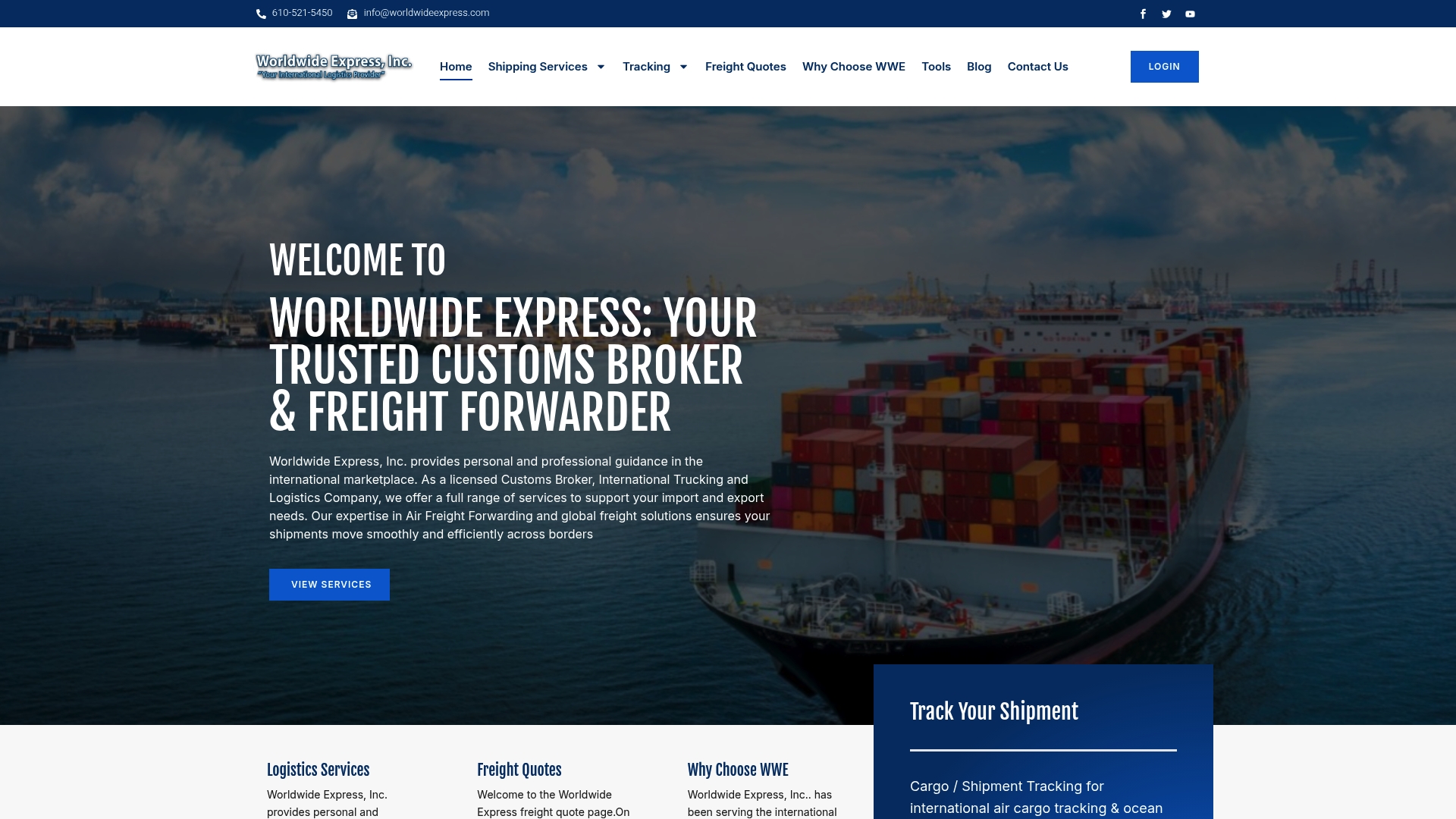
You do not have to navigate these challenges alone. At Worldwide Express, Inc., we specialize in end-to-end international shipping solutions including the expert handling of all your through bill of lading and documentation needs. Whether it is customs clearance, secure freight forwarding, or supply chain transparency, our team is ready to help you ship with total confidence. Explore our Uncategorized section for more insights or visit our homepage now to get tailored solutions for your next cross-border shipment. Take action today and move your business forward with a trusted logistics partner.
Frequently Asked Questions
What is a through bill of lading?
A through bill of lading is a comprehensive shipping document that covers the entire transportation journey of goods from origin to destination, regardless of the number of carriers or transportation modes involved.
Why is a through bill of lading important in international trade?
It simplifies documentation, reduces administrative complexity, and provides clear accountability across different transportation stages, making it critical for businesses engaged in complex international shipping.
What key components are included in a through bill of lading?
A through bill of lading typically includes identifying information such as the names and addresses of the shipper and receiver, details about the goods being transported, carrier information, and legal provisions regarding liability and cargo handling.
How does a through bill of lading facilitate multimodal transportation?
It allows goods to be transported using various carriers and modes by providing a single comprehensive document, therefore reducing logistical challenges and ensuring smoother transitions between different transportation methods.
Recommended
- Understanding Bill of Lading Types in Trade Transactions – Worldwide Express, Inc.
- 8 Key Freight Terms Definitions Every Importer Should Know – Worldwide Express, Inc.
- What is the Bill of Entry? Understanding Its Importance – Worldwide Express, Inc.
- Understanding Inco Terms: Key Concepts for Global Trade – Worldwide Express, Inc.



